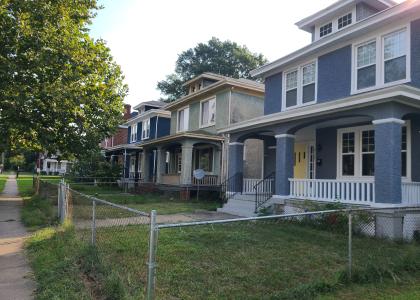Energy efficiency retrofits for multifamily buildings offer a host of benefits beyond energy savings to building owners and tenants. The problem is that efficiency programs that spur investment in this kind of work are not always assessed fairly. In our new report, Multiple Benefits of Multifamily Energy Efficiency for Cost-Effectiveness Screening, we describe the wide range of benefits resulting from multifamily efficiency retrofits and provide solutions for how to establish their value and include them in regulatory testing, for fairer assessment of multifamily efficiency programs by regulators.
Energy efficient buildings have benefits beyond energy savings
Key to a multifamily building owner’s bottom line is keeping vacancy and turnover rates low. Many savvy building owners realize that energy efficiency retrofits to their buildings can lead to a host of other benefits beyond energy savings that help their bottom line. When tenants are more comfortable and have lower, more manageable utility bills, they don't move as often. Apartments that stay warm and cozy in the winter, instead of cold and drafty, are easier to rent out and have lower vacancy rates. Heating and cooling systems that function properly and don’t break down as often result in lower maintenance costs and fewer tenant complaints. In short, when building owners are deciding to do an energy efficiency retrofit project, they are making a number of considerations about how the work impacts the satisfaction of tenants, and thus how the work impacts their business.
The problem with cost-effectiveness screening today
The problem is we aren’t doing a very good job when it comes to accounting for these benefits and including them in cost effectiveness screening. Despite growing recognition by those undertaking retrofit work in their buildings, and those designing and running multifamily programs, the multiple benefits that result from energy efficiency retrofits are not consistently accounted for in cost-effectiveness screening. Multifamily program administrators screen programs to determine whether the benefits of utility investments for energy efficiency improvements outweigh the costs. Most tests used by regulators to evaluate whole-building retrofits do not include the value of benefits beyond the cost of energy saved, even though the most widely used tests, like the Total Resource Cost test (TRC), are designed to include them. The result is that administrators balance all the costs of a program against only some of the benefits, and so they fail to capture the full value of energy efficiency improvements.
Incorporating the value of multiple benefits into cost effectiveness screening for these programs is important for scaling up programs that target savings in the multifamily sector, because the results of the tests are often used to compare efficiency programs to one another within a utility’s program portfolio. If the building owner’s project costs are not balanced by all the benefits, these programs don’t always stand up against other efficiency program investments.
Finding a solution
Our new report offers guidance on how program administrators can value the multiple benefits of energy efficiency, and incorporate them into cost-effectiveness screening. Drawing from a growing body of research that focuses on multifamily buildings, the report provides examples of the range of benefits and their values. In many cases, benefits experienced by building owners are already accounted for as part of their standard accounting practices, including maintenance and repair costs, and costs of other utilities (particularly water and delivered fuels). For benefits that are difficult to quantify and value, or that take extensive amounts of time and effort to assess, there are options to include rough estimates or adders to indicate a value in relation to the cost of energy saved, and validate with pre- and post-retrofit data collected when the program is administered. Benefits should not be omitted from cost-effectiveness testing because of a lack of precise data. Now it is time to balance the costs of energy efficiency improvements with all the benefits that result, so that projects and measures that represent cost-effective energy savings are not left on the table.




